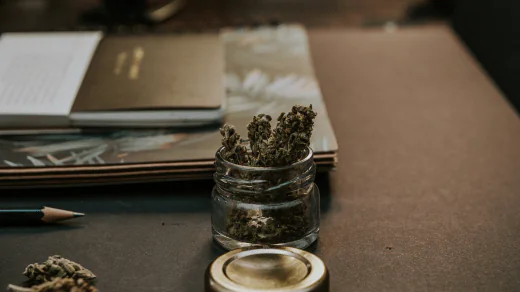The Economic Case for Legalizing Marijuana

In recent years, numerous states in the U.S. have taken significant steps towards decriminalizing marijuana, thereby legalizing its use for both medicinal and recreational purposes. This progressive shift has not only transformed the perception but has also paved the way for a booming industry.
Amidst the ongoing debates about marijuana legalization, one often neglected aspect is the economic potential of the cannabis industry. In this article, I’ll delve into the history of marijuana legalization and expand more on the economic benefits of legalizing marijuana.
Quick History of Marijuana Legalization in the USA
The U.S. has a long history with marijuana, dating back to the Colonial Era. Back in the 17th Century, the government was all for American hemp production, using it for things like ropes, sails, and clothing. It thrived until after the Civil War, when imports took over.
In the late 19th Century, marijuana found its way into medicinal products and was openly sold in pharmacies. Fast forward to the Mexican Revolution of 1910, bringing in a wave of immigrants and the recreational use of marijuana. Suddenly, the drug got tangled up with the newcomers, stirring up fears and prejudices. “Marijuana Menace” warnings came during the Great Depression, fueled by unemployment and anxiety about Mexican immigrants. By 1931, 29 states had banned marijuana.
Then came the 1937 Marihuana Tax Act, slamming the criminal label on marijuana. Interestingly, around the same time, the New York Academy of Medicine said marijuana didn’t spark violence, insanity, or lead to addiction.
During World War II, hemp was back in action for military gear, thanks to the “Hemp for Victory” program. The 1950s brought strict federal laws with mandatory sentences for drug offenses. However, the swinging ’60s ushered in a more relaxed vibe towards marijuana. Even Presidents Kennedy and Johnson got reports saying marijuana didn’t lead to violence or heavier drug use.
In 1970, Congress dialed back the mandatory penalties. In 1972, the Shafer Commission suggested decriminalizing personal marijuana use, but President Nixon didn’t have it. The ‘70s saw eleven states decriminalizing, but then a parent’s movement against marijuana kicked off in 1976, setting the stage for Reagan’s War on Drugs in the 80s. Mandatory sentences were back, including the “three strikes you’re out” policy.
Despite the crackdown, a shift in public perception was brewing. In 1996, California passed Proposition 215, allowing medical use of marijuana for serious diseases. This established the foundation for the continuing conflict between federal marijuana laws and state laws that permit it in some circumstances.
Jumping through time to 2022, the landscape of marijuana legalization has evolved and cut across so many states. More and more are hopping on the legalization train, whether it’s for medicinal purposes, recreational use, or a combination of both. This shift has given rise to a whole new industry, with companies diving into cannabis research, developing medical products, and handling the cultivation and distribution of marijuana.
However, not every state is on board. During the 2022 midterm elections, Missouri and Maryland embraced marijuana legalization by approving relevant measures. On the other hand, North Dakota, South Dakota, and Arkansas opted to halt the progression of similar initiatives, effectively applying the brakes on their consideration.
Post-midterms, the scorecard reads: 37 states are in for medical cannabis, and 21 states plus the District of Columbia are open to non-medical cannabis for personal use. The legislative dance continues, with more states like Delaware tossing around bills like HB 305 to make marijuana legal for adults.
On the federal stage, there’s a whiff of progress. In October 2022, President Biden pardoned prior federal offenses for simple possession of marijuana and nudged the Justice Department to rethink its classification of marijuana as a Schedule I controlled substance. These moves hint at a potential future where decriminalization goes nationwide.
In the year 2023, significant strides were made in the legalization of cannabis in multiple states. Kentucky took a progressive step by legalizing medical cannabis through its state legislature, offering patients access to a safe and effective treatment option.
Delaware made an even bolder move, legalizing recreational cannabis through its state legislature, becoming the first state in the mid-Atlantic region to do so. Minnesota followed suit, legalizing recreational cannabis through its state legislature, marking a historic moment for the state. Additionally, Ohio made headlines by legalizing recreational cannabis through Issue 2, a citizen-initiated ballot measure that garnered overwhelming support from voters. These developments underscore the growing momentum behind cannabis legalization and its potential to reshape laws and policies across the United States.
Economically, the benefits of legalizing weed are already making waves. The early adopter states have seen a boost in their economies, raking in substantial revenue for both state and federal governments.
However, despite the economic gains, the split between state and federal laws on the cultivation and usage of marijuana continues to be a sticky issue. Let’s do a quick run-through of the legal landscape surrounding marijuana cultivation in the United States.
Current U.S Laws on Cannabis (Marijuana) Cultivation
It’s crucial to understand that U.S. laws officially categorize hemp as a type of cannabis, the same plant that yields marijuana. However, the major distinction in the laws is the specification that hemp must not have more than 0.3% THC. For proper context, THC is the compound responsible for the plant’s psychoactive effects. Essentially, approved hemp in the U.S. shouldn’t get you high.
For a long time, federal law treated hemp similarly to other cannabis plants, all of which were essentially outlawed by the Marihuana Tax Act in 1937 and formally banned in 1970 under the Controlled Substances Act.
As of today, the hemp policy in the United States has seen various significant alterations, leading to even more confusion and misconceptions. The U.S. laws on Cannabis have become a dynamic landscape with evolving regulations that can be challenging to keep up with.
Significantly, federal laws in the U.S. categorize marijuana as a controlled substance (Schedule I ), making its cultivation, possession, and distribution illegal for any individual. This classification makes it challenging for individuals who want to freely cultivate seeds for marijuana on a larger scale in many states.
The only option available at the moment is to restrict cultivation to the U.S. states that have laws legalizing marijuana within their borders. In some states, it’s now legal to grow marijuana for medical or recreational use. These states have set up rules to control everything from cultivation to distribution and possession of Cannabis. This is why you must dig into the laws governing your state before venturing into marijuana cultivation or usage.
It is also important to note that state-approved cannabis programs aren’t directly influenced by the federal Farm Bill, which still sees marijuana as illegal. Even with the unfavorable federal stance, a total of 33 states have given the green light for the medical use of marijuana over the past 22 years. Similarly, ten states have given the nod for adult use in the last 6 years.
Here’s a kicker: despite the state legality, CBD products, even if they’re from state-approved medical or adult-use cannabis programs, are still a no-go federally. This is a big deal to keep consumers in the loop, especially with all the confusion around the legality and availability of CBD products. Now, the famous 2018 Farm Bill did make legal CBD products more accessible, but it doesn’t mean all CBD products get a free pass. Consumers need to do their homework on the producers to make sure they’re legit and playing by the rules.
But what if everything changes today, and the federal laws finally legalize marijuana; how will that benefit the nation’s economy? Below are some excellent answers.
Economic Benefits of Legalizing MarijuanaJob Creation and Economic Growth
One of the significant benefits of legalizing marijuana is the potential for job creation and economic growth. Cultivating, processing, distributing, and selling marijuana seeds clearly require a workforce that spans various sectors.
Even with the current limitations in the marijuana industry, we can still see numerous medical, scientific, and agricultural research focusing on the cannabis plant. Such research has birthed a breakthrough like the feminized cannabis seeds.
From farmers and lab technicians diligently working behind the scenes to retail workers and marketing professionals engaging with customers, this industry provides a platform for individuals to contribute their talents and expertise. This, in turn, stimulates economic growth by increasing consumer spending power and generating tax revenue.
Beyond just job creation, this marijuana legalization will kickstart economic activity within the cannabis industry in many regions.
This projection is backed by the measurable economic impact we’ve seen in states like Nevada and California after the recent establishment of marijuana nurseries and dispensaries.
A study by the Marijuana Policy Group and RCG Economics suggests legalizing recreational marijuana in Nevada could sustain over 41,000 jobs by 2024, generating over $1.7 billion in labor income.
Similarly, an ICF study estimates that legalized marijuana sales in California would generate at least 81,000 new direct, indirect, and induced jobs. The study also forecasts at least a $3.5 billion boost in total labor income.
Increase in Tax Revenue
Legalizing marijuana can also have a significant impact on tax revenue generation. Governments can generate significant revenue by taxing marijuana cultivation, sales, and consumption. This revenue can serve as a valuable source of funding for public services and infrastructure development.
Several states in the United States, such as Colorado and Washington, have already experienced the positive effects of marijuana sales in their tax revenue stream. In 2021, Washington raked in $559.5 million in legal marijuana revenue, a notable $85 million increase from its 2020 revenue. On the other hand, Colorado saw a nearly 10% uptick in marijuana tax revenue, reaching $423 million in 2021 compared to the previous year.
The collective tax revenue from all states went from $1.7 billion in 2019 to a staggering $3.7 billion in 2021. The exciting thing about this record is that the revenue was generated from legal adult-use cannabis sales alone.
In fact, this doesn’t even account for the revenue benefiting statewide budgets, cities, and towns. When marijuana is legalized nationwide, such revenue can be allocated towards education, healthcare, and other vital sectors, ultimately benefiting the overall economy.
Tourism and Entrepreneurship Opportunities
Another area where legalizing marijuana can bring economic benefits is through tourism and entrepreneurship opportunities.
With the legalization of marijuana, many tourists are attracted to destinations where they can freely indulge in its consumption. This influx of tourists can boost local businesses, including hotels, restaurants, and retail shops, creating a ripple effect on the economy.
Additionally, entrepreneurs can seize the opportunity to establish marijuana-related businesses, such as dispensaries, cannabis cafes, and cannabis-infused product manufacturers, which can further contribute to economic growth and job creation.
Challenges and Concerns of Legalizing Marijuana
While the economic benefits of legalizing marijuana are significant, it is crucial to acknowledge the challenges and concerns associated with this move.
One of the primary concerns is the potential increase in drug abuse and addiction rates.
Critics argue that legalizing marijuana may normalize its use and lead to a rise in substance abuse problems. Therefore, governments need to implement strict regulations and educational campaigns to address these concerns effectively.
Case Studies of States and Countries That Have Legalized Marijuana
To gain a better understanding of the economic potential of legalizing marijuana, let’s dive deeper to explore some case studies of states and countries that have already taken this step.
Colorado, United States
Colorado was one of the first states in the U.S. to legalize marijuana for recreational use. Since its legalization in 2014, Colorado has experienced a surge in tourism, job creation, and tax revenue generation. The state has seen an increase in the number of dispensaries, cultivation facilities, and related businesses, which have contributed to the overall economic growth.
Uruguay
In 2013, Uruguay made history in the race marijuana legalization race. The nation became the first in the world to completely legalize marijuana.
In a groundbreaking move, the government established a state-regulated market for the production and sale of marijuana products. The primary goals of this initiative were twofold: firstly, to curb drug-related crimes, and secondly, to foster a regulated industry that would contribute to the country’s economic growth. The legalization has opened up opportunities for entrepreneurship and allowed the government to generate tax revenue.
Final Thoughts
The economic potential of legalizing marijuana is immense. The advantages are apparent, ranging from job creation and tax revenue generation to the promotion of tourism and the fostering of entrepreneurial opportunities. However, it is crucial to address the concerns associated with substance abuse and addiction through proper regulation and education.
Governments can foster a thriving and sustainable marijuana industry by drawing insights from successful case studies. This industry has the potential to stimulate economic growth and positively impact various sectors, such as agriculture, tourism, and healthcare. As we move forward, it is essential to recognize and harness the full potential of marijuana for a prosperous future.





